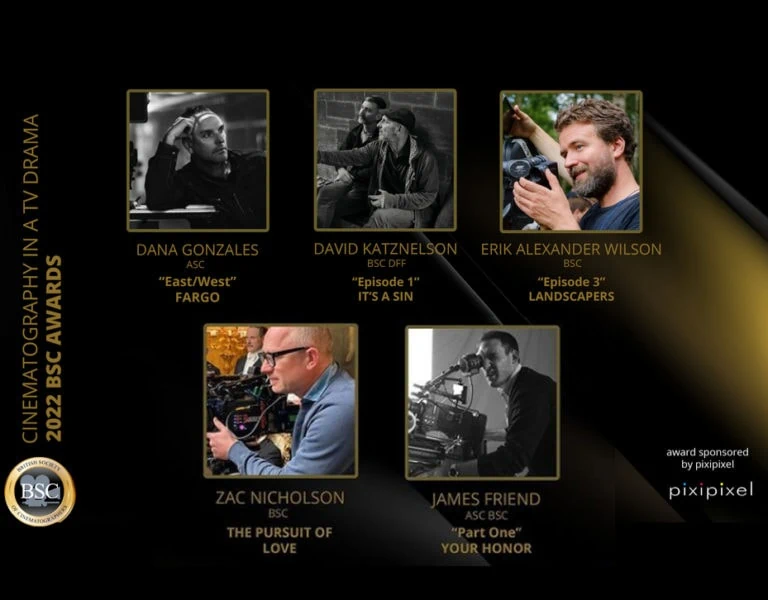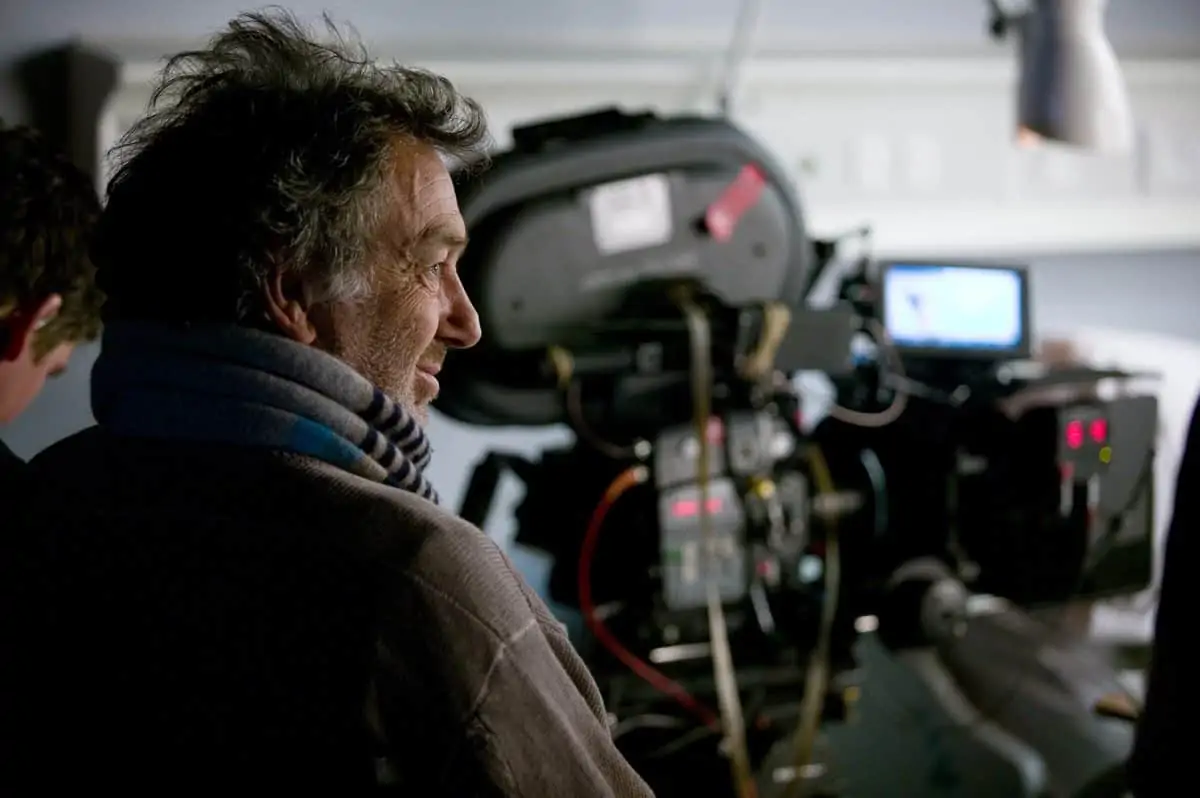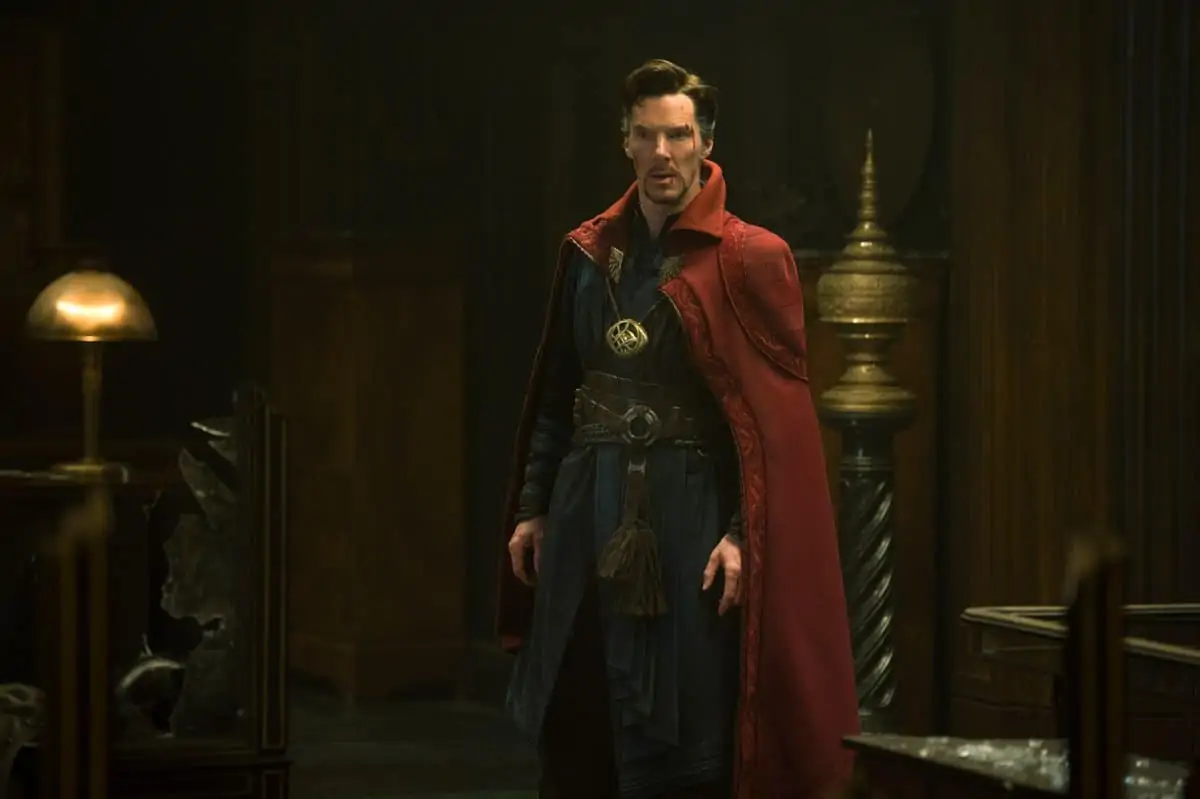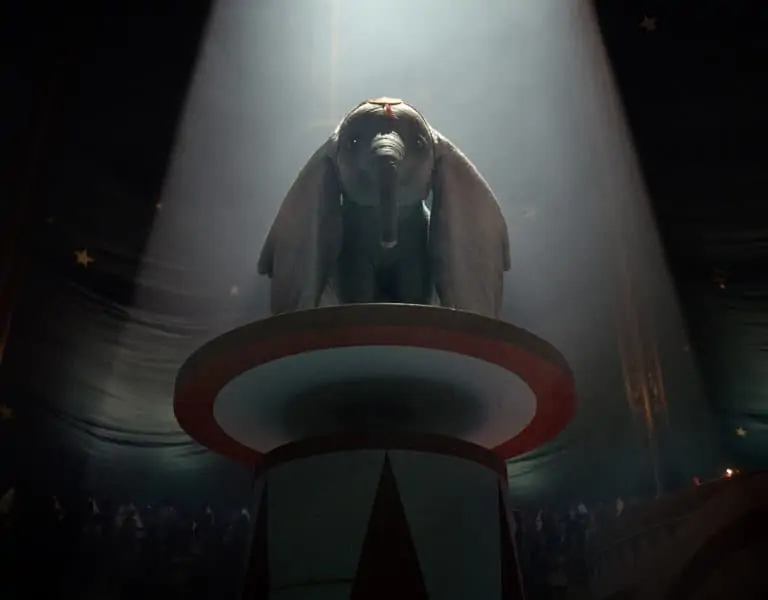CAPTIVATED BY COLOUR
Cinematographer and president of the 2022 FilmLight Colour Awards jury, Ben Davis BSC talks about his relationship with colour, the importance of the colourist’s role in the filmmaking process, and why colour should be an integral part of every production’s creative conversation.
All of Ben Davis BSC’s reference points for colour in his work have come from everyday life. “As you go through life as a DP, you become very aware of the colour and light of every situation and mentally record all these experiences,” he says.
Watching thousands of movies and having a keen interest in photography and the arts – in particular the origins of colour photography – has also had an impact on Davis’s ever-evolving fascination and relationship with colour and the tones he weaves into his on-screen creations.
From Guardians of the Galaxy through to Three Billboards Outside Ebbing, Missouri, Davis has adopted a different approach to colour for each film he’s lensed, with much of this determined by “the environment you’re shooting in, how you control colour, what the natural colours are and whether you’re trying to enhance or work against them.
“Often colour is dictated by the time of day, weather, and light source. If a light source has a certain hue, you need to ask where the shadows and blacks sit. Is there a hue to the blacks within the scene?” If there’s a warmer key source, sometimes he likes to introduce a cooler shadow area to achieve some colour contrast because – alongside focus and atmospherics – colour is another tool to add depth on screen.
Controlling the palette between set design, costume, and photography in pre-production and then using colour to complement each one can be visually rewarding for cinematographers. Therefore, in prep, Davis enjoys discussing the palette in detail, including whether any colours are being limited or enhanced.
Although there is a supposed set of guidelines as to which colours complement each other, he challenges filmmakers to make up their own minds about which colours they like to combine. “Some clash, but that might be what you’re trying to achieve. Sometimes you may want to go against the emotion of a scene with the colour or tone.
“There are no hard and fast rules about how much colour to use or which hues to put together. Look at the bold use of colour in Only God Forgives, shot by Larry Smith BSC ASC, compared to Roger Deakins CBE BSC ASC’s limited use of colour in The Assassination of Jesse James – they’re both fantastic. As a cinematographer, it’s essential to use colour as a tool. It’s as important as light quality, key light, and shadow – colour is just another part of that conversation.”
Achieving a common goal
While no approach to colour in filmmaking is incorrect, cinematographers must photograph a scene the way they want it to appear and achieve as much in camera as possible. “If you want a scene to be warm with a cool shadow, photograph it that way. And then when you get into the grading suite, you’re merely enhancing that,” says Davis.
While shooting, cinematographers must also be aware of what can be achieved in the grading suite because “if you photograph something well, a good colourist will enhance it in some way, but if you’ve photographed something poorly, a colourist isn’t going to rescue your bad photography. Yes, they can give it a look, but they don’t have a magic wand.”
Davis refers to Todd Haynes’ Far from Heaven, lensed by Ed Lachman ASC, as an example of a film which adopted a very specific colour palette, but achieved much of the final look through the cinematography initially before enhancements were made in the grading suite. “I can see Ed achieved most of it in camera, but the fact it looks terrific means his colourist worked with him to accomplish the same end goal.
“If the film has great cinematography and looks amazing, you can guarantee the colourist contributed to that. The cinematography and the colourist’s work combine to make one thing. And some things are difficult to achieve, like photographing day for night, meaning your colourist must do a lot of work to get it to the right place. So, if a day for night scene is successful, you can tell a colourist has done an excellent job.”
Like his fellow cinematographers, Davis sees the colourist’s role as fundamental to the process, valuing his collaboration with the gurus of the grading suite. Every cinematographer’s relationship with their colourist differs; Davis tends to work with the same colourist or a small group of colourists – including Adam Glassman at Goldcrest and Steve Scott at Company 3 – as “they have an understanding of what I want to achieve and are honest with me. That connection is very important because a conversation takes place between the cinematographer and colourist about the image, the art, and what you’re trying to accomplish.”
As well as being keen to team up with a colourist capable of enhancing what is captured, Davis looks for solutions to save time on set. If a window is too bright or a wall is too hot, there may not be time to gel a window or flag a wall when every minute costs money, but it can be reassuring to know it can be resolved in the grading suite later if needed.
While a cinematographer should know the parameters of working in a DI suite and what can be achieved, a good colourist should also have a fundamental understanding of cinematography and what the film they are grading is about. “This means you’re not working against the film, which can happen when you start overpowering a scene by a look. A good colourist understands the cinematography should always support the drama. In fact, the term colourist is slightly incorrect because they deal with so much more than colour – they handle contrast, light levels, shadows, tracking, and more.”
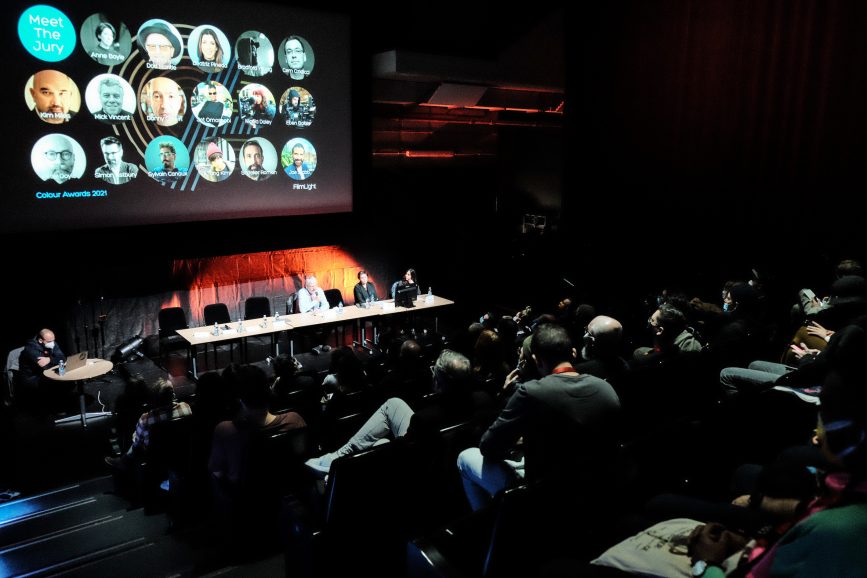
Recognising talent
Despite the significant technical and artistic role colourists play in the creation of a film, their achievements go largely unrecognised, highlights Davis: “When the plaudits are handed out, colourists seem to be rather low down the pecking order and I think that needs to be put right in some way.
“When I have conversations before starting to work on a film, one of the most important discussions is about who the colourist will be. All DPs will agree their relationship with that collaborator is vital, and I believe we can help increase the acknowledgement of that role.”
One way in which Davis is hoping to help recognise the abundance of talent and creativity within the colourist community is by joining this year’s FilmLight Colour Awards jury as jury as jury president. Now in its second year following a successful inaugural event at 2021’s EnergaCAMERIMAGE Film Festival, the event makes a welcome return at this year’s festival to continue celebrating the art of colour grading, with an even more diverse and large number of entries and jury members plus a new Spotlight award for the unsung talents in the industry.
Judges this year include cinematographers Eben Bolter BSC, Ari Wegner ACS, Christopher Ross BSC, Bruno Delbonnel ASC AFC, Sherri Kauk, Cao Yu ASC CNSC, K K Senthil Kumar, and Stephen Lighthill ASC, and colourists Isabelle Barrière, Sylvain Canaux, Yvan Lucas, Andreas Brueckl, Toby Tomkins, and Bobola Oniwura, Joe Stabb, Maxine Gervais, Cem Ozkilicci, and Paul Harrison plus experts Beatriz Pineda, Arnaud Carèo, Daphne Dentz, Mark Ma, and Matthew Tomlinson.
Rarely sitting on juries due to work commitments, when Davis was asked to judge the Colour Awards, he deemed it important to be part of the process as “it’s about time colourists received the recognition they deserve. I also thought being on the jury would present an opportunity to look at material I may not normally see as I’m sure some of the entries will adopt a strong approach that is different to what I might use. It’s an education for me as much as anything else.”
He anticipates judging the entries won’t be easy due to the “difficulty of separating the work of the colourist and the cinematographer because the two are symbiotic.” As well as looking for winning entries that are beautifully photographed, Davis is expecting to be surprised by the submissions. “I might look at something and think, wow, they’ve gone for a really strong visual approach which is actually really interesting. I wonder how they’ve achieved that?
“When I first agreed to judge the awards, I initially thought I didn’t like a DI approach that was too heavy handed as that’s not my approach. But since giving it more thought, I’ve realised that’s not the right way to look at it as a judge. You need to approach it with an open mind and question whether it works and whether it looks good. Just because it’s not the way I would do it, doesn’t mean it’s incorrect.”
